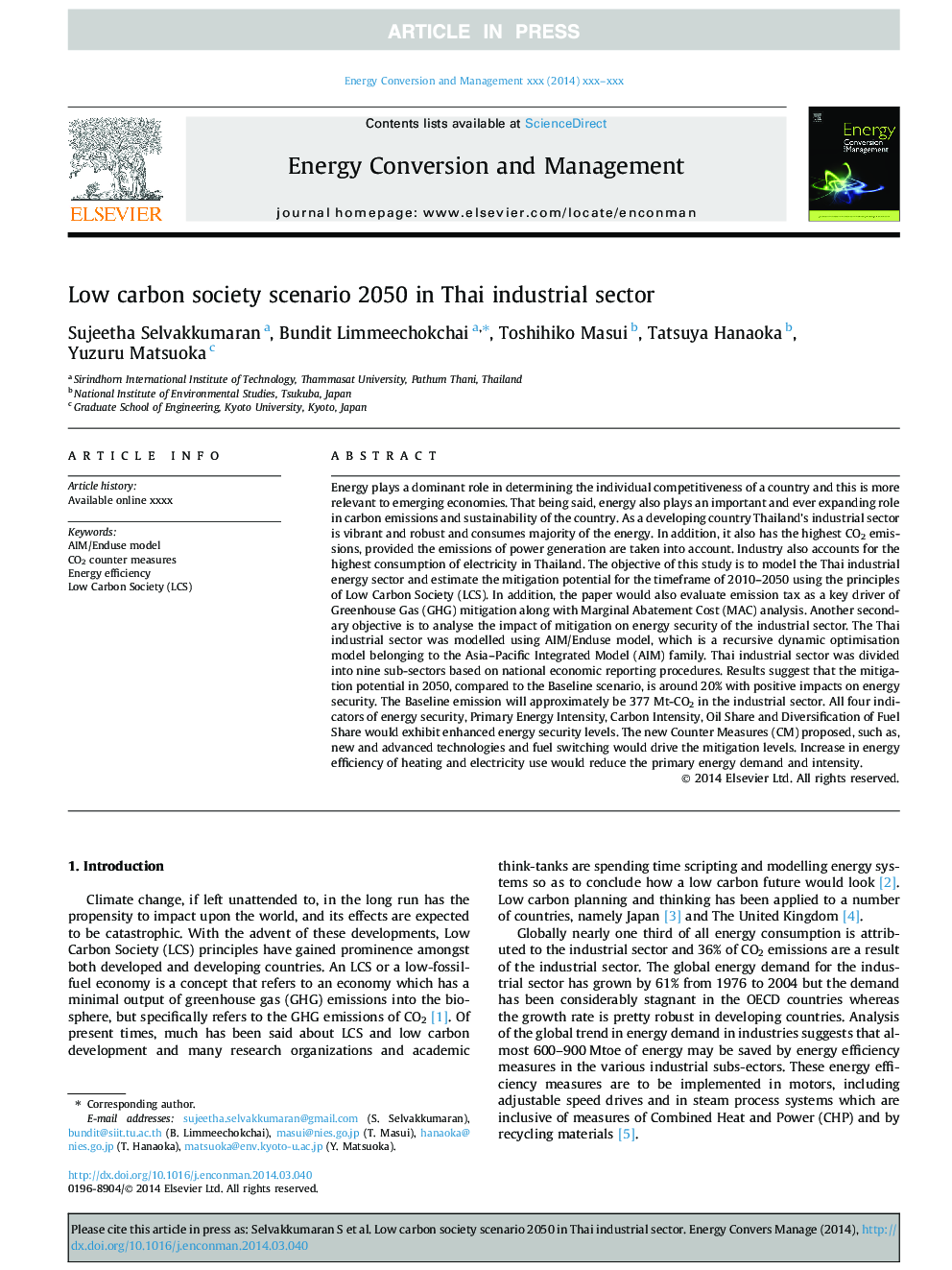| کد مقاله | کد نشریه | سال انتشار | مقاله انگلیسی | نسخه تمام متن |
|---|---|---|---|---|
| 7164639 | 1462877 | 2014 | 12 صفحه PDF | دانلود رایگان |
عنوان انگلیسی مقاله ISI
Low carbon society scenario 2050 in Thai industrial sector
ترجمه فارسی عنوان
سناریوی کم کربن جامعه 2050 در بخش صنعتی تایلند
دانلود مقاله + سفارش ترجمه
دانلود مقاله ISI انگلیسی
رایگان برای ایرانیان
کلمات کلیدی
موضوعات مرتبط
مهندسی و علوم پایه
مهندسی انرژی
انرژی (عمومی)
چکیده انگلیسی
Energy plays a dominant role in determining the individual competitiveness of a country and this is more relevant to emerging economies. That being said, energy also plays an important and ever expanding role in carbon emissions and sustainability of the country. As a developing country Thailand's industrial sector is vibrant and robust and consumes majority of the energy. In addition, it also has the highest CO2 emissions, provided the emissions of power generation are taken into account. Industry also accounts for the highest consumption of electricity in Thailand. The objective of this study is to model the Thai industrial energy sector and estimate the mitigation potential for the timeframe of 2010-2050 using the principles of Low Carbon Society (LCS). In addition, the paper would also evaluate emission tax as a key driver of Greenhouse Gas (GHG) mitigation along with Marginal Abatement Cost (MAC) analysis. Another secondary objective is to analyse the impact of mitigation on energy security of the industrial sector. The Thai industrial sector was modelled using AIM/Enduse model, which is a recursive dynamic optimisation model belonging to the Asia-Pacific Integrated Model (AIM) family. Thai industrial sector was divided into nine sub-sectors based on national economic reporting procedures. Results suggest that the mitigation potential in 2050, compared to the Baseline scenario, is around 20% with positive impacts on energy security. The Baseline emission will approximately be 377 Mt-CO2 in the industrial sector. All four indicators of energy security, Primary Energy Intensity, Carbon Intensity, Oil Share and Diversification of Fuel Share would exhibit enhanced energy security levels. The new Counter Measures (CM) proposed, such as, new and advanced technologies and fuel switching would drive the mitigation levels. Increase in energy efficiency of heating and electricity use would reduce the primary energy demand and intensity.
ناشر
Database: Elsevier - ScienceDirect (ساینس دایرکت)
Journal: Energy Conversion and Management - Volume 85, September 2014, Pages 663-674
Journal: Energy Conversion and Management - Volume 85, September 2014, Pages 663-674
نویسندگان
Sujeetha Selvakkumaran, Bundit Limmeechokchai, Toshihiko Masui, Tatsuya Hanaoka, Yuzuru Matsuoka,
